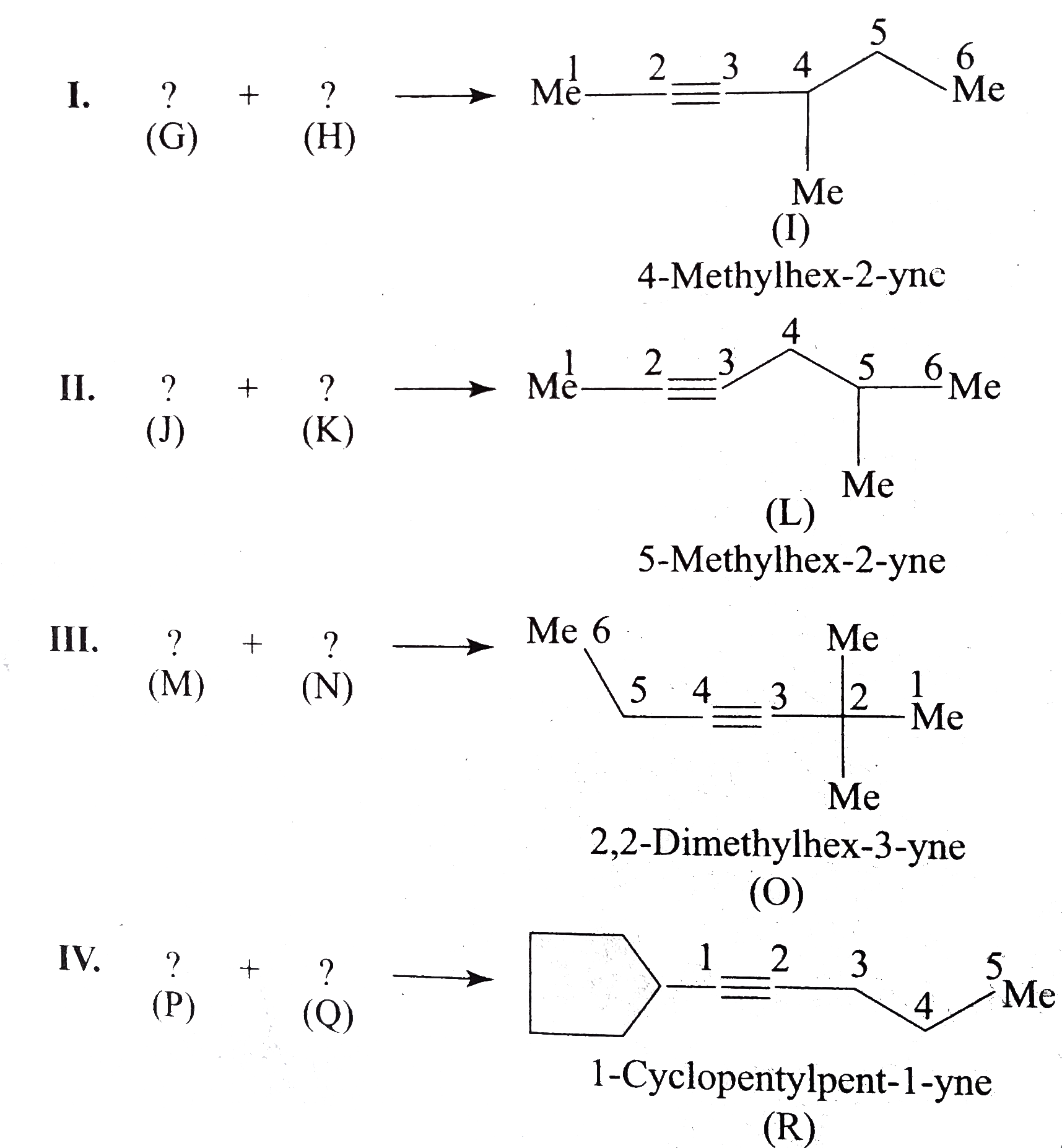Complete the following:
a. 2PhCHO+NH2NH2→
b. Reduction of PhCHO with the following: i. LAH
ii. Clemmensen's reduction (Zn(Hg)/conc.HCl)
iii. Wolff-Kishner reduction (NH2NH2+Glycol+ΘOH)
Let's break down the question step by step.
Step 1: Reaction of Benzaldehyde with Hydrazine
The first part of the question asks us to complete the reaction:
2PhCHO+NH2NH2→
Solution:
When benzaldehyde (PhCHO) reacts with hydrazine (NH2NH2), it undergoes a nucleophilic addition reaction. The nitrogen from hydrazine attacks the carbonyl carbon of benzaldehyde, leading to the formation of a hydrazone. The reaction can be represented as follows:
1. The carbonyl group (C=O) of benzaldehyde is attacked by the nitrogen atom of hydrazine.
2. This results in the formation of a compound where the carbonyl oxygen is replaced by a nitrogen atom, forming a hydrazone.
The product formed is:
PhCH=N-NH2 (Phenylhydrazone)
Step 2: Reduction of Benzaldehyde with Lithium Aluminum Hydride (LAH)
The second part of the question asks for the reduction of benzaldehyde with LAH:
PhCHO+LAH→
Solution:
Lithium aluminum hydride (LAH) is a strong reducing agent. When benzaldehyde is treated with LAH, the carbonyl group (C=O) is reduced to a primary alcohol (C-OH).
The product formed is:
PhCH2OH (Benzyl alcohol)
Step 3: Reduction of Benzaldehyde with Clemmensen Reduction
Next, we consider the Clemmensen reduction:
PhCHO+Zn(Hg) / conc. HCl→
Solution:
In the Clemmensen reduction, benzaldehyde is reduced to toluene (methylbenzene) using zinc amalgam and concentrated hydrochloric acid. The carbonyl group is fully reduced to a methylene group (CH2).
The product formed is:
C6H5CH3 (Toluene)
Step 4: Reduction of Benzaldehyde with Wolff-Kishner Reduction
Finally, we look at the Wolff-Kishner reduction:
PhCHO+NH2NH2+Glycol+Δ→
Solution:
In the Wolff-Kishner reduction, benzaldehyde is treated with hydrazine in the presence of glycol and heat. This reaction also reduces the carbonyl group to a methylene group.
The product formed is:
C6H5CH3 (Toluene)
Summary of Products
- a. 2PhCHO+NH2NH2→PhCH=N-NH2 (Phenylhydrazone)
- b. i. PhCHO+LAH→PhCH2OH (Benzyl alcohol)
- b. ii. PhCHO+Zn(Hg) / conc. HCl→C6H5CH3 (Toluene)
- b. iii. PhCHO+NH2NH2+Glycol+Δ→C6H5CH3 (Toluene)
The first part of the question asks us to complete the reaction:
2PhCHO+NH2NH2→
When benzaldehyde (PhCHO) reacts with hydrazine (NH2NH2), it undergoes a nucleophilic addition reaction. The nitrogen from hydrazine attacks the carbonyl carbon of benzaldehyde, leading to the formation of a hydrazone. The reaction can be represented as follows:
2. This results in the formation of a compound where the carbonyl oxygen is replaced by a nitrogen atom, forming a hydrazone.
PhCH=N-NH2 (Phenylhydrazone)
The second part of the question asks for the reduction of benzaldehyde with LAH:
PhCHO+LAH→
Lithium aluminum hydride (LAH) is a strong reducing agent. When benzaldehyde is treated with LAH, the carbonyl group (C=O) is reduced to a primary alcohol (C-OH).
PhCH2OH (Benzyl alcohol)
Next, we consider the Clemmensen reduction:
PhCHO+Zn(Hg) / conc. HCl→
In the Clemmensen reduction, benzaldehyde is reduced to toluene (methylbenzene) using zinc amalgam and concentrated hydrochloric acid. The carbonyl group is fully reduced to a methylene group (CH2).
C6H5CH3 (Toluene)
Finally, we look at the Wolff-Kishner reduction:
PhCHO+NH2NH2+Glycol+Δ→
In the Wolff-Kishner reduction, benzaldehyde is treated with hydrazine in the presence of glycol and heat. This reaction also reduces the carbonyl group to a methylene group.
C6H5CH3 (Toluene)
- a. 2PhCHO+NH2NH2→PhCH=N-NH2 (Phenylhydrazone)
- b. i. PhCHO+LAH→PhCH2OH (Benzyl alcohol)
- b. ii. PhCHO+Zn(Hg) / conc. HCl→C6H5CH3 (Toluene)
- b. iii. PhCHO+NH2NH2+Glycol+Δ→C6H5CH3 (Toluene)
Topper's Solved these Questions
- ALIPHATIC AND AROMATIC ALDEHYDES AND KETONESBOOK - CENGAGE CHEMISTRY ENGLISHCHAPTER - ALIPHATIC AND AROMATIC ALDEHYDES AND KETONESEXERCISE - Exercises Concept Application
20 Videos
- ALIPHATIC AND AROMATIC ALDEHYDES AND KETONESBOOK - CENGAGE CHEMISTRY ENGLISHCHAPTER - ALIPHATIC AND AROMATIC ALDEHYDES AND KETONESEXERCISE - Exercises Linked Comprehension
59 Videos
- ALIPHATIC AND AROMATIC ALDEHYDES AND KETONESBOOK - CENGAGE CHEMISTRY ENGLISHCHAPTER - ALIPHATIC AND AROMATIC ALDEHYDES AND KETONESEXERCISE - Solved Examples
13 Videos
- ALCOHOL,PHENOL AND ETHERSBOOK - CENGAGE CHEMISTRY ENGLISHCHAPTER - ALCOHOL,PHENOL AND ETHERSEXERCISE - Archives Analytical And Descriptive
15 Videos
- APPENDIX INORGANIC VOLUME 2BOOK - CENGAGE CHEMISTRY ENGLISHCHAPTER - APPENDIX INORGANIC VOLUME 2EXERCISE - Short Answer Type
179 Videos
Similar Questions
Knowledge Check
Consider the following reaction : HCHO+2[Ag(NH3)2]++3OH−→2Ag+HCOO−+4NH3+2H2O
Which of the following statements regarding oxidation and reduction is correct?AHCHO is oxidised to HCOO− and [Ag(NH3)2]+ is reduced to Ag.BHCHO is reduced to ddHCOO− and [Ag(NH3)2]+ is oxidised to Ag.C[Ag(NH3)2]+ is reduced to Ag while OH− is oxidised to HCOO−D[Ag(NH3)2]+ is oxidised to NH3 while HCHO is reduced to H2O.
Consider the reaction
RCHO+NH2NH2→R−CH=NNH2
What sort of reaction is it?
View SolutionComplete the following reaction :
(i) NH3+3Cl2(excess)→ (ii) XeF6+2H2O→
View SolutionComplete the following reactions:
a. Prop−1−yneNaNH2−−−−→liq.NH2(B)

View SolutionWhich of the statements are correct about the following reactions ?
MeCHO+[Ag(NH3)2]⊕+ΘOH+→MeCOOΘ+Ag
View SolutionIn the conversion NH2OH→N2O, the equivalent weight of NH2OH will be:
View SolutionComplete the following reactions and name the products:
C2H5NH2NaNO2.HCl−−−−−−−→
View SolutionComplete the following reactions :
a. Et2NH+PhSO2Cl→
c. PhCH2NH2+HCOOHΔ−−→
c. PhNH2+PhCHO→.
View Solution
